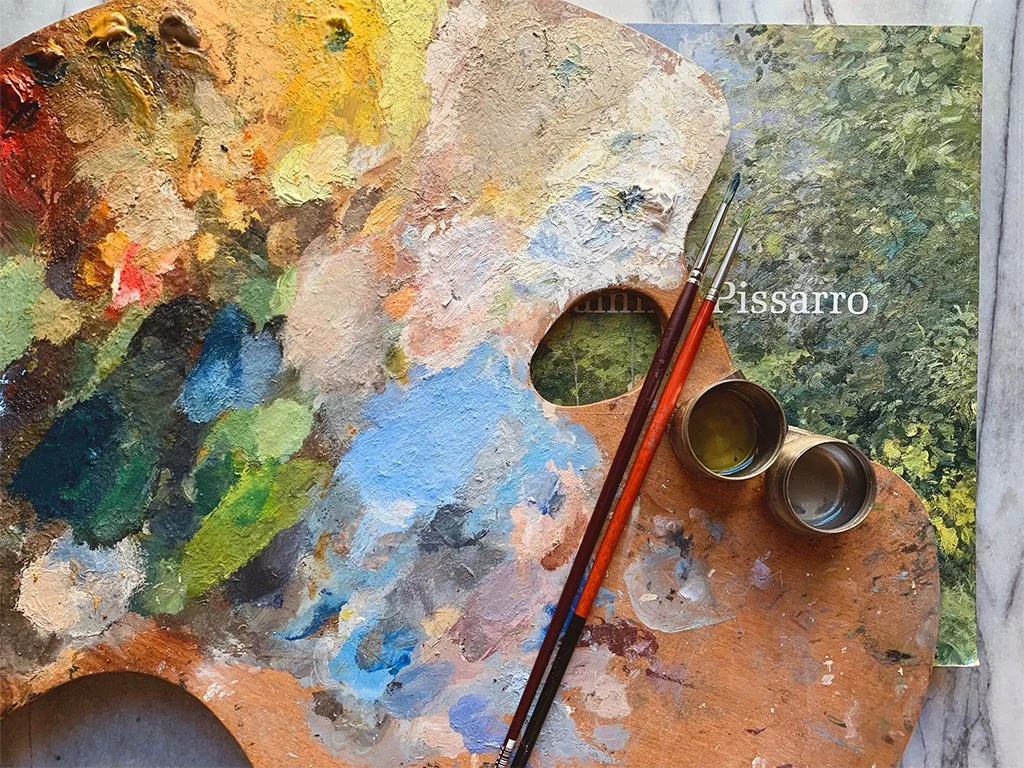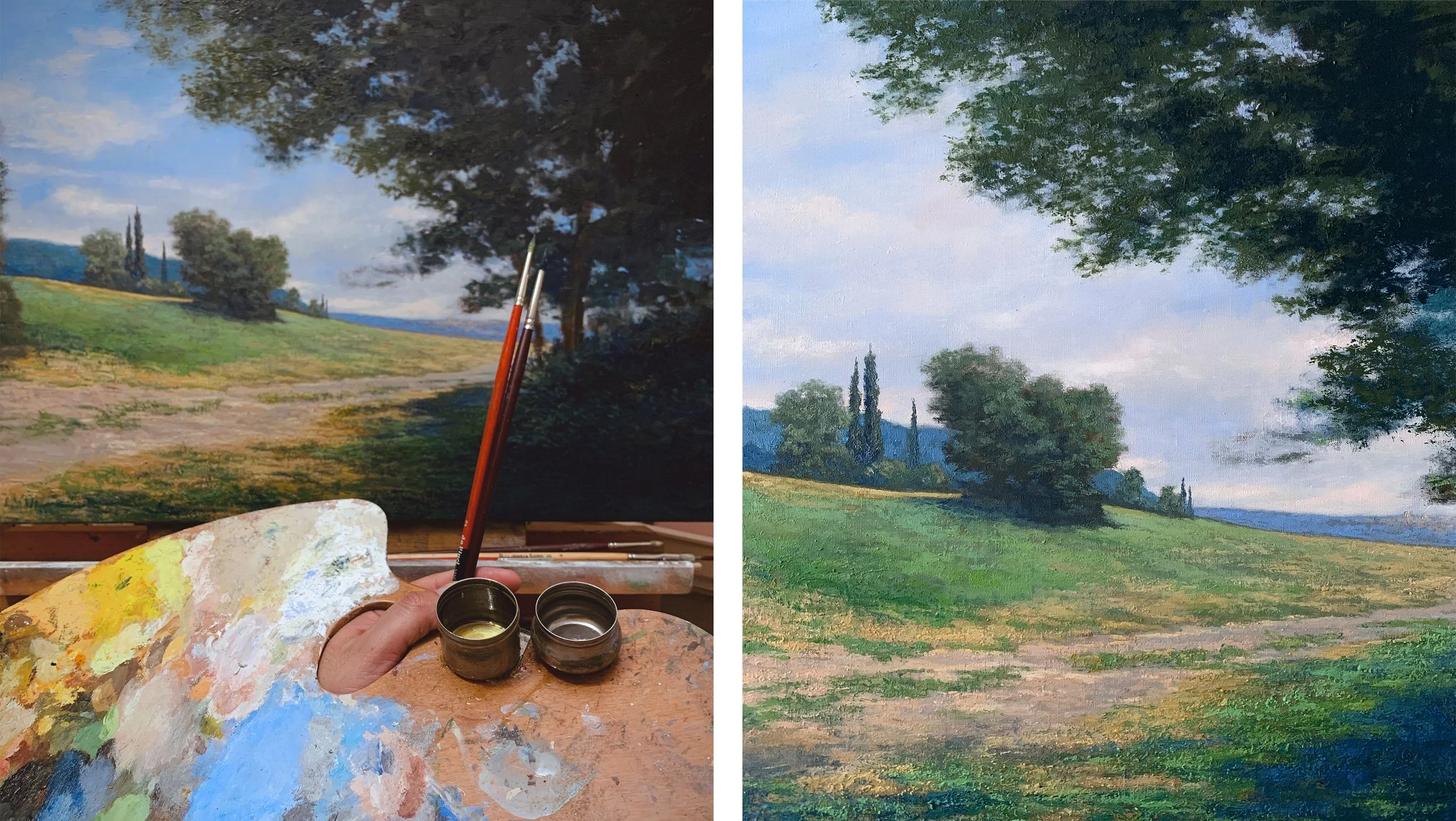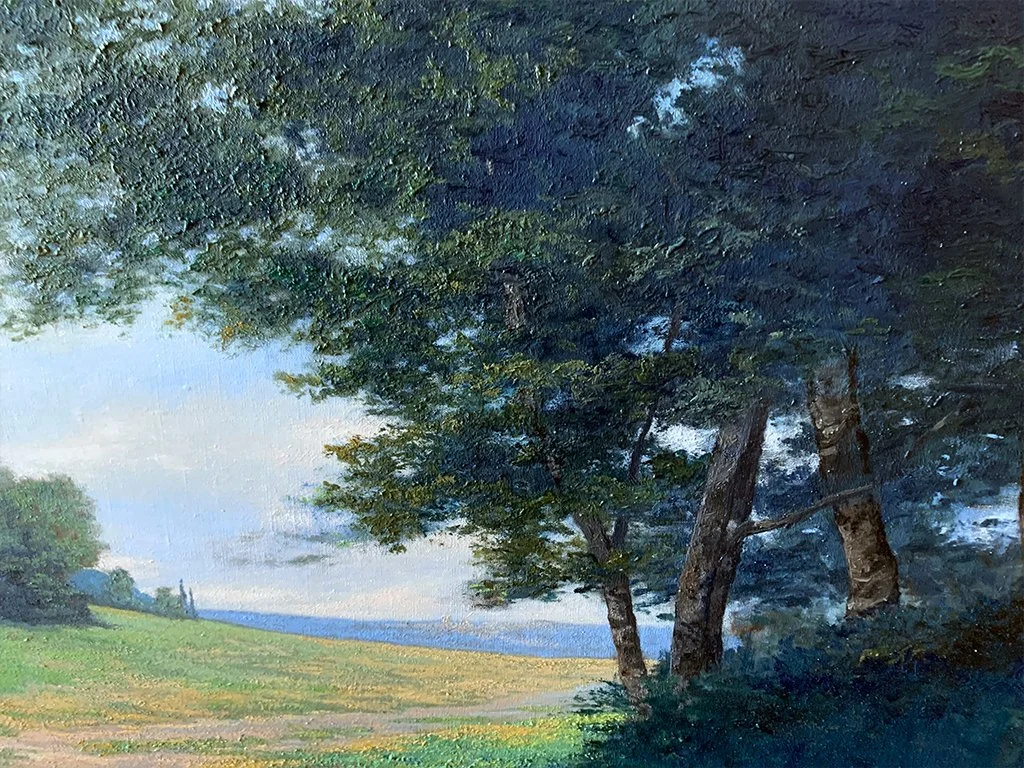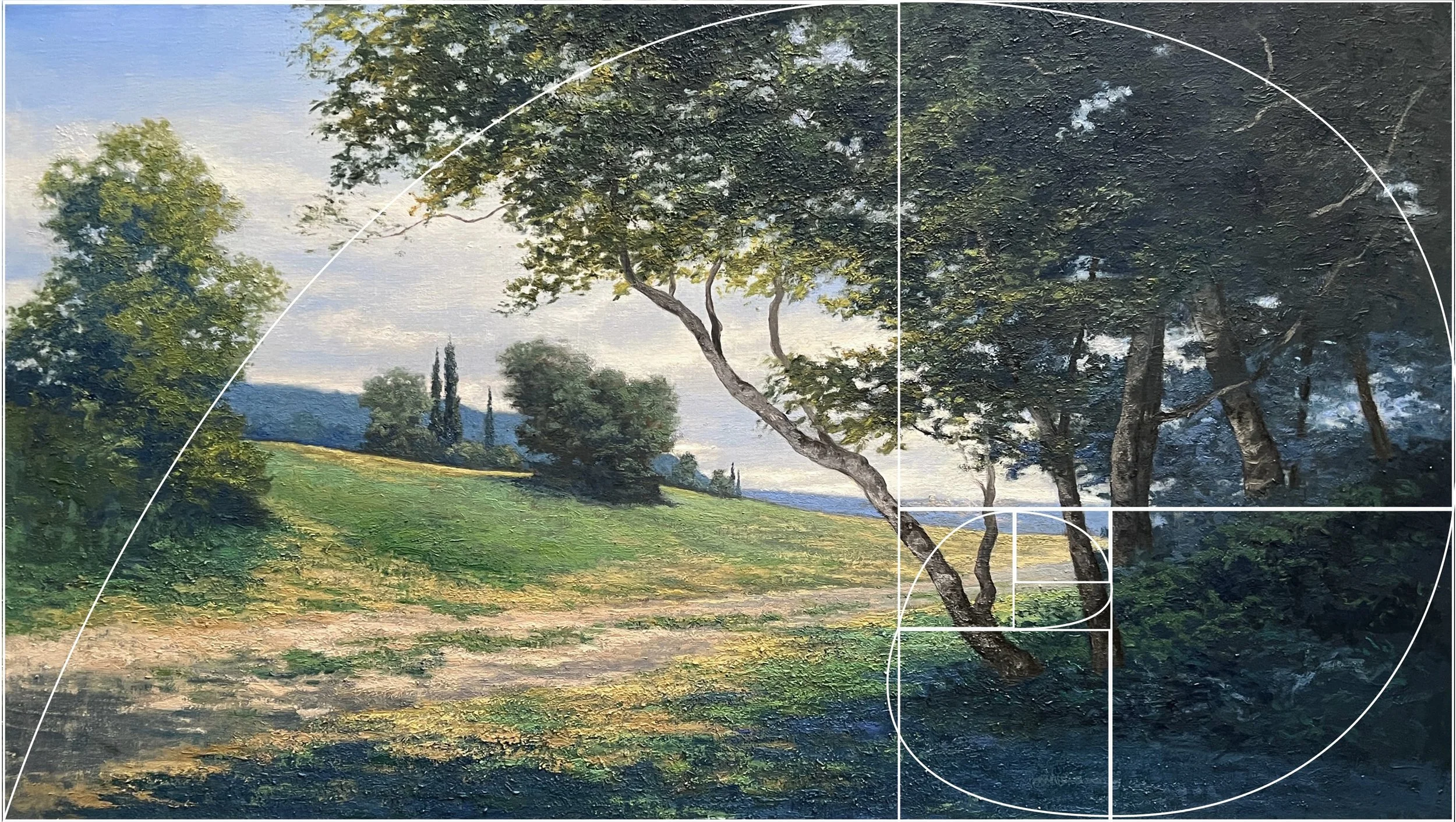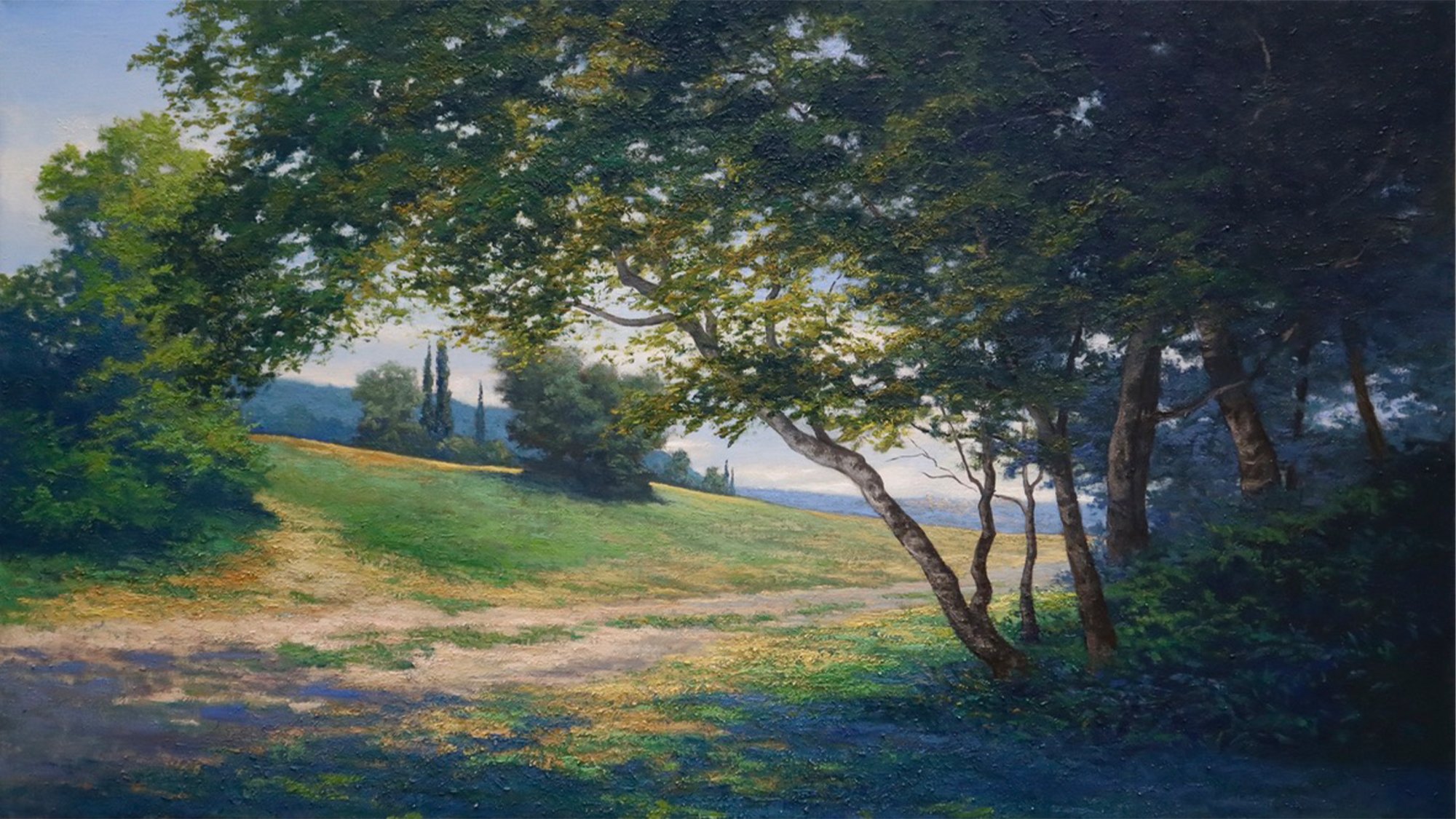Trajectory of a Painting - Part 3
If you are coming across this post, I should let you know that this is part of series of articles written about the process of making one of my paintings. You are welcome to browse the website for the three previous blog posts on the subject, but for the sake of saving you time I’ll give you a quick overview.
At the end of 2020 I began working on painting, which at the moment was the largest landscape scene I had executed in years. My impulse when I first began the work was out of necessity to reconnect with painting, which at the time I had done very little of. But soon this impulse became a challenge of many sorts. Number one was to execute this work by the beginning of February, before I embarked on a year long Graphic Design program. This meant I had about one and a half months to complete it. Although at the start it seemed promising that I would be able to meet this feat, I should have known better. I tend to leave paintings behind, or extend the process over a period of years, and this particular work also fell victim to my neglect. The second challenge was to execute a painting from start to finish from imagination. In the years leading up to this project, I had mastered the art of transferring mental images onto my drawings and monotypes. But could I translate this process to a painting? The third challenge involved embracing a new brand of oil paint, one that aimed to emulate the quality of the old masters. While modern paint makers couldn't replicate Rembrandt's handcrafted paints, Rublev colors provided a pre-made alternative. What intrigued me was the potential to use this pure oil paint without any solvents, allowing me to move on canvas with ease and build up layers and texture just like the masters. That’s what I’ve been wanting for my work, to have more of a painterly effect and let the paint surface speak for itself, revealing it’s history, and my moments of joy or doubt.
So here we are, it’s the end of January and the painting is not complete. I’m not upset thought, since in the short weeks of work I achieved more than the usual. The full surface of the linen had been covered, the composition was planned, and the build up of texture that I wanted was all there. From this point on I kept working on the foliage of the trees on the right side of the picture. I wanted to match the texture of the ground, but I could not force it. I had to let this happen naturally so that the paint application would be visibly organic. I was after the Monet effect. When you look at his paintings closely, you will see that the canvas has a long history of brush strokes of various sizes and energy. Some strokes break and reappear, others are bold and sit on top of the surface like a proud explorer marking a new territory. Nothing in the paint surface of a Monet painting is weak or simple. The canvas has been labored over as he searched for something deeper in the relationship between light and matter.
Unfortunately for me, my days of exploration came to an end in Feb. 2021. I would not touch this painting again until June 2021, but as it sat on the floor of my studio I always acknowledged its presence and I would ask it, what do you need? What’s missing? How can I make this better? I asked these questions over and over again, in the meantime I kept building the texture on the group of trees on the right side. At this point I began giving the trunks more shape, I also added couple to make the composition more dynamic. All sorts of problem solving took place directly on the linen canvas without any thumbnail sketching or drawing. This perhaps was my mistake, but I had set my mind that I could paint a landscape from imagination directly on the the canvas.
As the questioning progressed over the summer, I replied by adding another tree to the grouping on the right. The missing element in the picture was that the background and foreground were not connecting. They existed in two different planes and there was nothing much to it. My way of connecting both was to draw a few lines across, at an angle, and make a Corot like tree out of them. This meant that the tree canopy would extend further left and curve down. Here’s when doubt creeps in. Perhaps many artists go through this, maybe not and I’m just not good at what I do, but there comes a time when you are happy with most of your choices, and then you make a mark or add another element to make things better. But you come across the fear of ruining hours of work if you make the wrong choice. If you do make the wrong choice you can always paint over it, but by doing so will you be able to match the colors again? Would it change things too much? This sort of mentality can be paralyzing and when you get into this iffy area it can be hard to snap out. Some of the greatest artists in history were/are fearless. If need be, they will sacrifice whatever it is in a work to make it better. I was not blessed with this freedom to be fearless, but as I grow older and more sure of my skills I have been taking more risks (in painting and drawing that is).
For months I set the painting aside, I had declared it finished, but in the back of my mind there was a little voice telling me that I was not done. I hate that pesky voice! At the start of 2023 after teaching a drawing workshop , in which I talked about the golden ratio, I got to thinking maybe it would be a good idea to see how this painting stands up to this compositional standard. I was pretty sure I would fail since I’m not much of a planner, I tend to work out of intuition and from “a feeling.” To my surprise I had created visually pleasing composition, but the grid also pointed out the missing part of this painting. The pesky voice was right and more work needed to be done. I had to complete the full curve of the canopy for this painting to work. With the golden ratio as reassurance I began work on this canvas again.
Luis Colan, Camino a Donde?, 2020 - 2023, oil on linen, 16 x 28 inches
At the end of May I was able to call this painting finished. I had to be fearless and sacrifice the landscape in the background for this composition to work. Getting attached to certain elements in a painting is not a good thing because it can blind you when you have to make choices. It may have taken long, but I got there, and I reached my goal at creating a landscape painting completely from imagination directly on the canvas.

